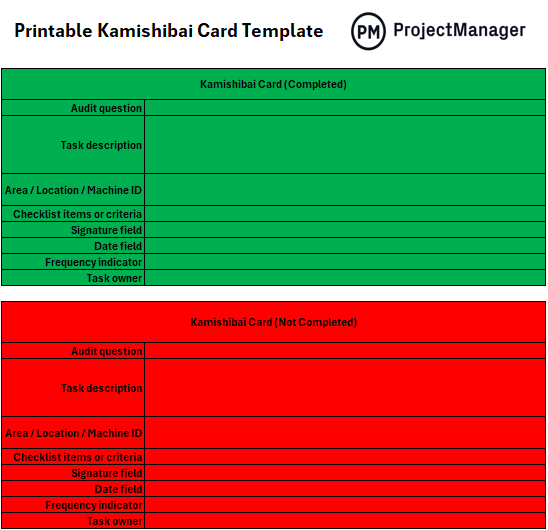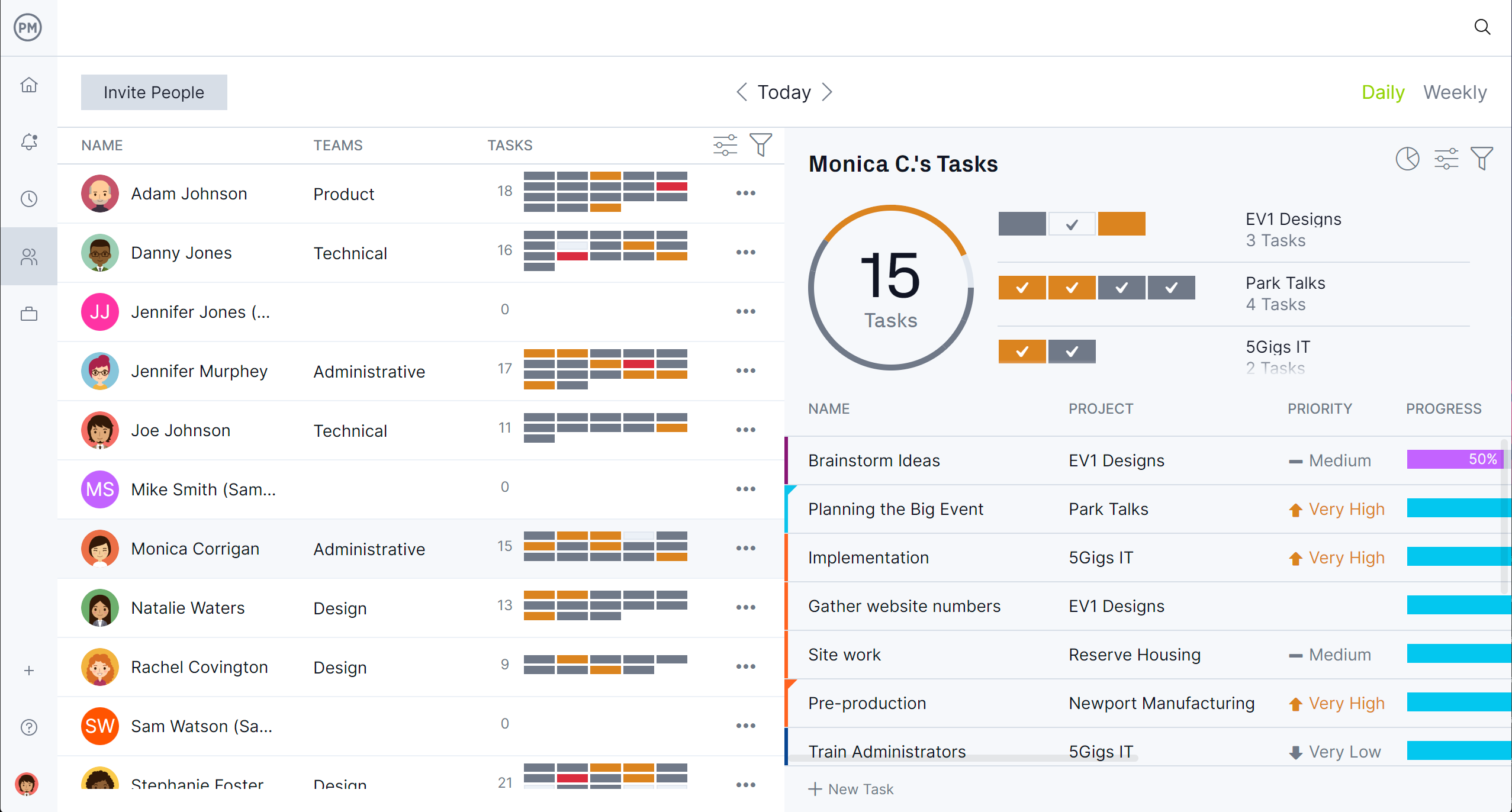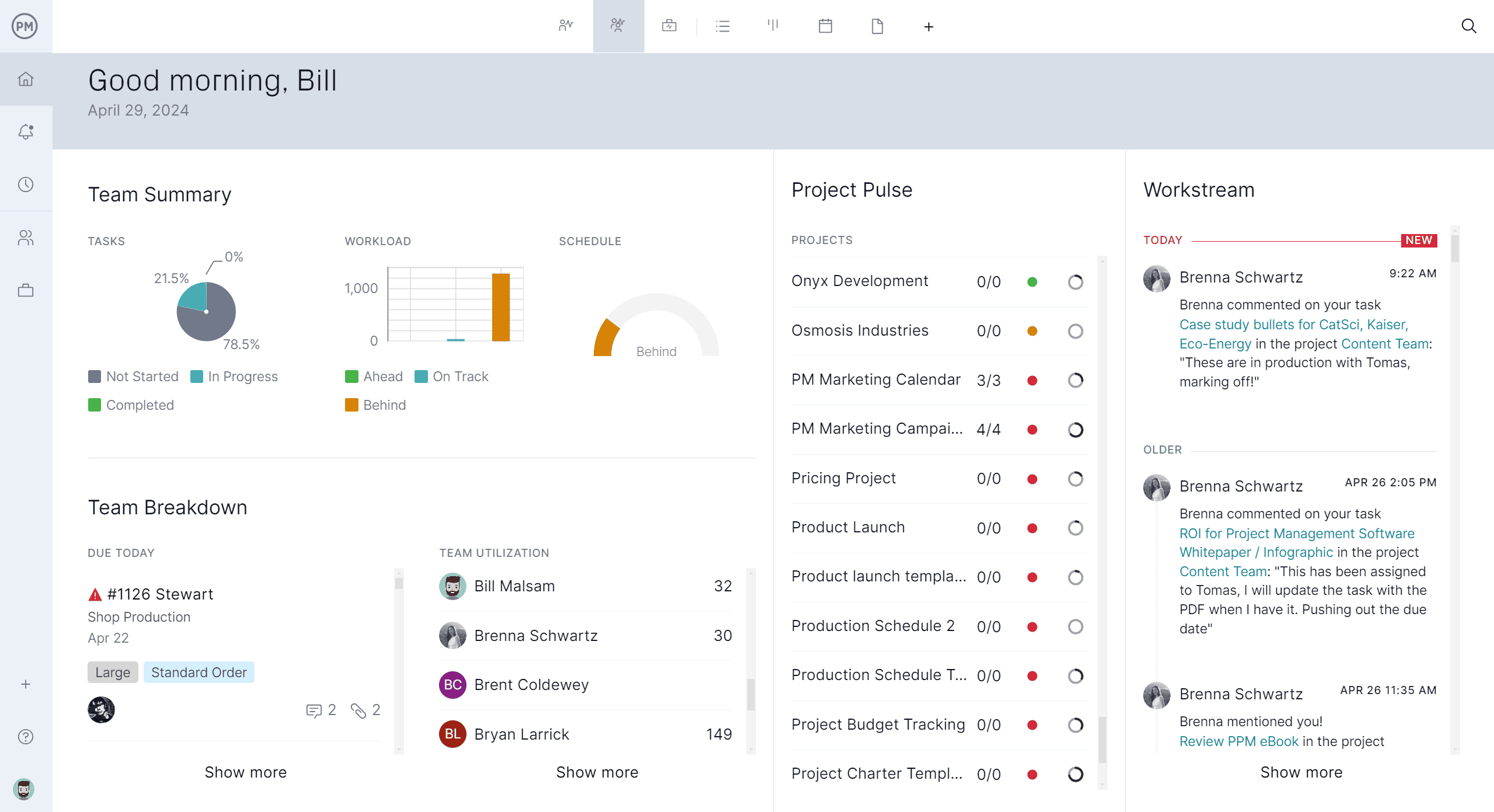In a busy manufacturing environment, visibility and accountability are crucial for maintaining smooth operations. A kamishibai board provides a simple yet powerful way for teams to manage audits, track compliance tasks and ensure that processes are consistently followed. With the right approach, it helps manufacturers maintain quality standards, reduce downtime and foster a culture of continuous improvement across the shop floor.
Using a kamishibai board makes it easy to spot missed steps, assign responsibility and monitor performance in real time. Manufacturers can quickly see which tasks have been completed, which are pending and where potential problems might arise. This proactive approach reduces errors, improves communication between teams and keeps everyone aligned with production goals. In this guide, we’ll explore why using a kamishibai board can benefit manufacturers and share examples and templates to help you get started.
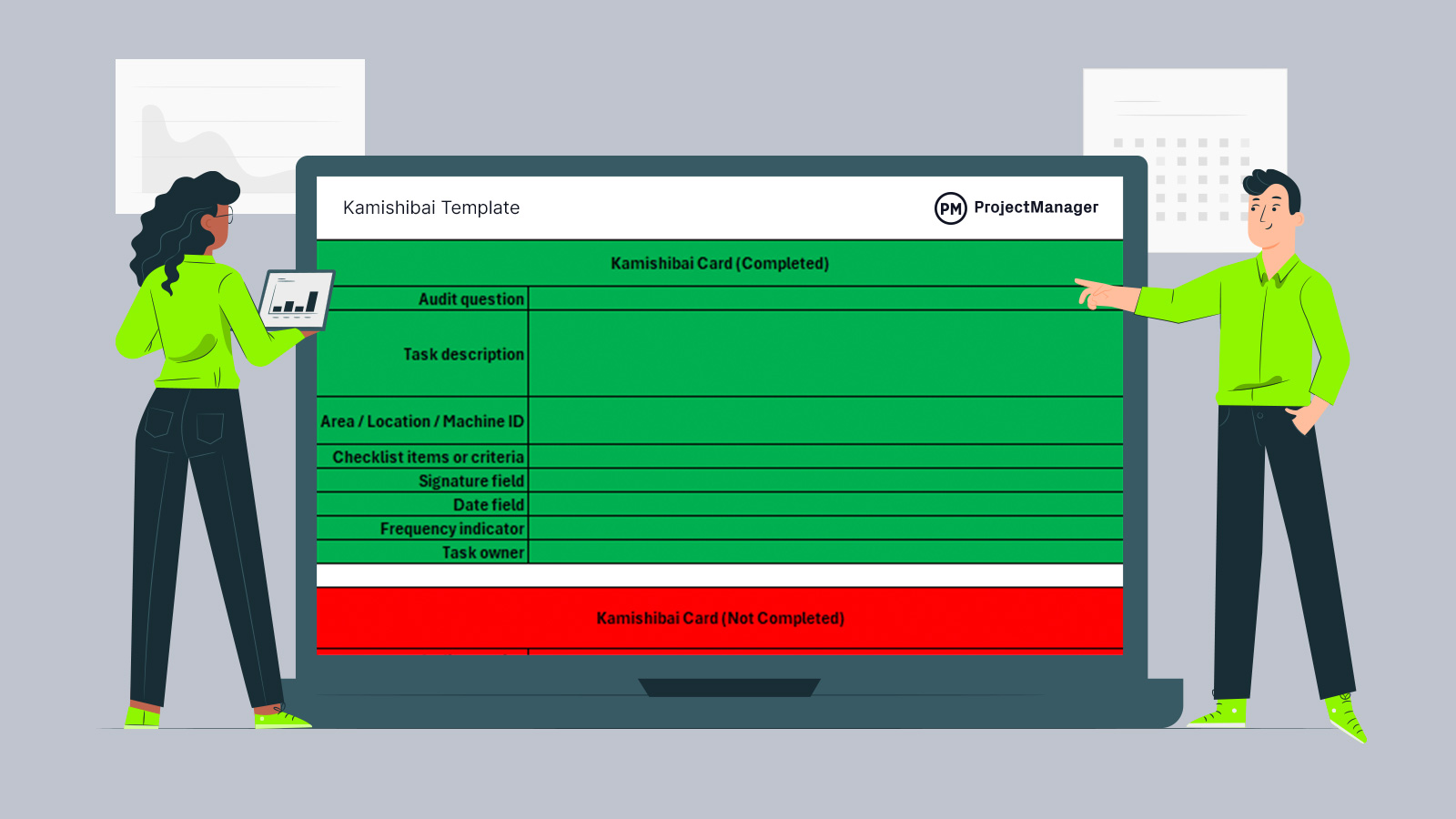

Get your free
Printable Kamishibai Card Template
Use this free Printable Kamishibai Card Template for Excel to manage your projects better.
What Is a Kamishibai Board?
A kamishibai board is a visual management tool that helps teams track recurring tasks and standardize processes on the shop floor. It is often used in lean manufacturing to audit workflows and ensure that key tasks are completed as scheduled. The board uses cards to represent tasks, allowing managers and operators to quickly see what has been done and what still needs attention. This level of transparency helps maintain quality, reduce errors and promote consistent production practices.
Because it’s highly visual, a kamishibai board allows for instant feedback. Team members can see missed tasks or delayed activities immediately, and supervisors can follow up to correct issues before they escalate. This proactive monitoring supports a culture of accountability and continuous improvement, helping manufacturers minimize waste and keep production lines running efficiently.
When paired with project management software, a kamishibai board becomes even more powerful. Software can automate task tracking, send reminders and store historical data for performance analysis. Managers can centralize audits, assign ownership digitally and create reports to monitor trends. This eliminates manual tracking and ensures that all stakeholders have real-time access to process data, making it easier to keep production on schedule.
ProjectManager takes this one step further by connecting kamishibai board tasks to a live Gantt chart. This means that recurring audits and process checks appear directly on the manufacturing project timeline, giving managers full visibility into their impact on production. With task dependencies, critical path filtering and baseline tracking, our software allows teams to see how process audits affect overall project delivery and adjust schedules as needed. This integration helps maintain efficiency while keeping compliance and quality checks fully aligned with production goals. Get started with ProjectManager today for free.
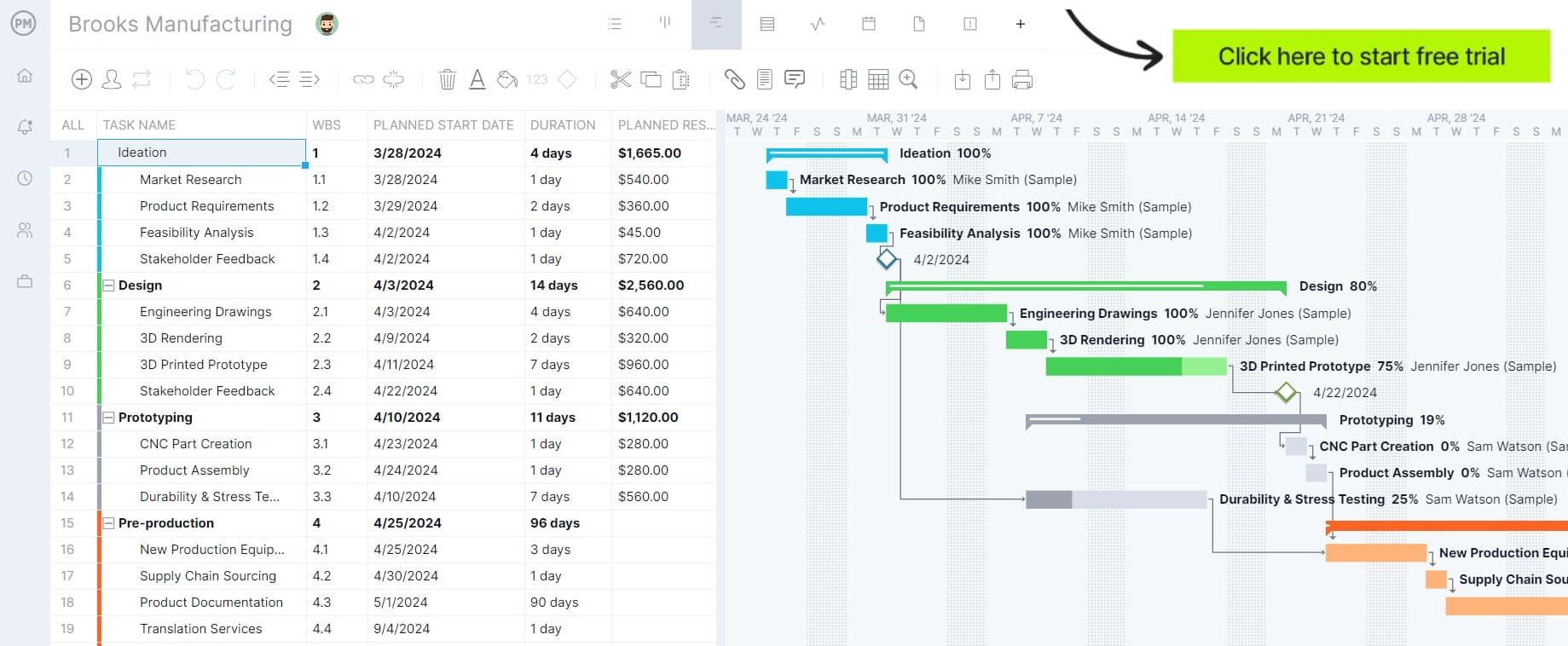

When to Use a Kamishibai Board
A kamishibai board is most effective when it’s part of a consistent routine that keeps manufacturing teams focused on quality and process compliance. One of the best times to use a kamishibai board is during a gemba walk, when managers or team leads go to the production floor to observe operations directly. By pulling kamishibai cards during the gemba walk, leaders can verify that standard operating procedures are being followed, confirm that safety checks are complete and address any issues on the spot.
Kamishibai boards are also helpful during shift changes, daily stand-up meetings or weekly production reviews. They create a structured way to confirm that routine tasks such as equipment inspections, cleaning and maintenance have been completed. This ensures that no steps are skipped and that the production line stays reliable. Using a kamishibai board consistently builds a culture of accountability and makes it easier to spot process gaps early, which helps prevent larger problems and production delays.
Related: 18 Free Manufacturing Excel Templates
Kamishibai Board Components
A kamishibai board is simple by design, but its components work together to create an effective visual management system. Each element plays a role in making tasks easy to track and audits quick to perform. By understanding the key components of a kamishibai board, manufacturers can design one that fits their workflow and supports continuous improvement on the shop floor.
Kamishibai Board Columns
Kamishibai board columns define the overall structure of the system. At a high level, the board acts as a scheduler and visual tracker, showing when audits or standard work checks need to happen. Instead of carrying task details, it provides a framework that makes responsibilities visible to everyone on the shop floor. The arrangement of the board can change from one workplace to another, but the goal remains the same: to make the timing and flow of audits transparent and easy to follow.
Kamishibai board columns can represent the following.
- Timeframes for the execution of tasks: Most kamishibai boards are split into vertical columns that represent time periods, and cards are placed under each of those timeframes so employees know that a task is meant to be executed at a particular time. The most common timeframes are: work shifts, days of the week, bi-weekly periods or monthly periods.
- Task categories: In some cases, kamishibai boards are not only divided by timeframes but also have horizontal columns to further specify the type of work, or task category, such as safety checks, quality checks, maintenance tasks, operational standards, etc.
- Task owner: Sometimes, especially in small teams, kamishibai boards can also display team members’ names and cards are then placed under each person’s name.
Related: 10 Best Production Planning Software
Kamishibai Cards
Kamishibai cards are the core content carriers of the system. Each card represents a specific task or audit checkpoint and provides clear guidance on what needs to be checked, by whom, and how results should be displayed. Unlike the board, which organizes timing, the cards themselves drive the action by containing the instructions, questions and indicators that guide workplace audits. When returned to the board, their color-coded sides make results instantly visible, reinforcing accountability and transparency.
Kamishibai cards can represent the following.
- Audit question: Each card often begins with a guiding question, such as “Are safety barriers in place?” or “Is the machine properly lubricated?” These questions help auditors focus on a specific standard without ambiguity.
- Task description: Cards typically include a short explanation of what the task involves. This ensures that anyone, even a substitute or new employee, can understand what to look for and can carry out the check.
- Area/Location/Machine ID: To avoid confusion, cards frequently identify where the check should be performed, such as a workstation number, machine ID, or physical area within the facility.
- Checklist items or criteria: Some cards break down a task into smaller points. For example, a quality check card might list “Inspect packaging, verify labels, confirm seal.” This helps auditors stay thorough.
- Signature field: Many cards include a small space for initials or a signature to confirm accountability. This ensures that checks are traceable and not performed anonymously.
- Date field: In some systems, cards have a space for the audit date. This helps track when checks were completed, especially if cards are reused over multiple cycles.
- Frequency indicator: Even though the board shows the schedule, the card often states if the task is daily, weekly or monthly.
- Task status: Kamishibai cards usually have two sides, red and green. If the kamishibai card is flipped on its green side, that means the task is completed. However, if the kamishibai card is showing its red side, the task isn’t completed; it’s either pending or there are issues.
- Task owner: Most kamishibai boards don’t show task owners, so the owner is usually indicated in the kamishibai cards.
Kamishibai Board Examples
To further illustrate the versatility of kamishibai boards, here are two examples. One of them categorizes kamishibai cards by task category, and the other groups kamishibai cards by person.


Kamishibai Card Example
Here is what a kamishibai card should look like. It contains the elements discussed above.
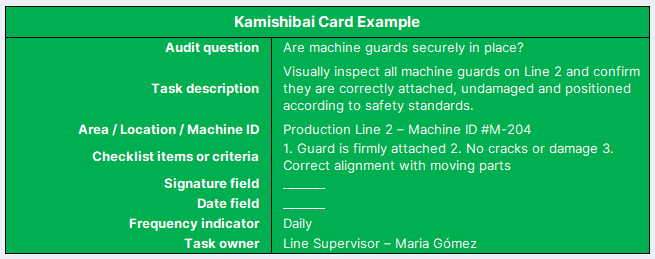

Printable Kamishibai Card Template
To create a kamishibai card like the example above, you can download our free, printable kamishibai card template for Excel by clicking the image below.
With this template, you can easily fill out your kamishibai cards in Excel, or simply print them out and fill them out manually. Their size can be adjusted to fit your physical kamishibai boards.
How to Use a Kamishibai Board In a Gemba Walk
Using a kamishibai board during a gemba walk ensures that audits are structured, transparent and easy to follow. The board guides supervisors through what needs to be checked, while the cards provide the details for each task. By following a simple step-by-step process, organizations can make standard work visible and drive continuous improvement.
1. Decide the Layout for the Kamishibai Board
Choose whether the board will be organized by timeframes (days, shifts) or by categories (safety, quality, maintenance). The layout should make it easy to see at a glance what needs to be checked.
2. Create Kamishibai Cards
Design cards with clear audit questions, task descriptions, and red/green sides. Ensure each card has enough detail to guide anyone doing the gemba walk without extra explanation.
3. Perform the Gemba Walk and Flip Cards
Supervisors or team leaders take the day’s cards, visit the gemba, and carry out the checks. When tasks are verified, cards are returned to the board with the appropriate color showing—green if standards are met, red if not.
4. Review Results and Take Action
At the end of the gemba walk, review the board. Red cards highlight problems that require corrective action. Assign follow-ups, record findings if needed, and ensure accountability. Over time, track trends to support continuous improvement.
Benefits of Using a Kamishibai Board in Manufacturing
Implementing a kamishibai board in a manufacturing setting offers a range of operational and cultural benefits. It strengthens accountability, improves communication and helps ensure that quality standards are consistently met. Here are some of the top benefits manufacturers can expect:
- Improves Process Visibility: A kamishibai board clarifies which tasks are complete and which still need attention, reducing confusion on the shop floor.
- Supports Gemba Walks: Supervisors can pull cards during a gemba walk to quickly confirm compliance with standard operating procedures and spot problems early.
- Encourages Accountability: Each card has an owner, making it clear who is responsible for completing a task and when it needs to be done.
- Enhances Communication: Teams can discuss completed or missed tasks during daily stand-ups, improving collaboration and transparency.
- Reduces Waste and Rework: By catching errors or missed steps early, the board helps prevent costly rework or production delays.
- Supports Continuous Improvement: Regular use of a kamishibai board highlights recurring issues, giving teams actionable data for process improvements.
- Standardizes Work: Tasks are visually organized, ensuring procedures are followed the same way every time and reducing variability in production.
- Boosts Engagement: Involving operators in the process gives them ownership over outcomes, which strengthens workplace culture and buy-in.
Free Production and Manufacturing Templates
Having the right project management templates can save time and make production planning, process mapping and inventory tracking much easier. These free templates are designed to help manufacturers streamline operations, improve visibility and keep teams aligned on priorities.
Kanban Board Template
Download this free kanban board template to visualize work in progress, track task status and keep production workflows organized. You can customize columns to represent different stages of your process and move tasks as they advance through production.
SIPOC Template
Use this free SIPOC template for process improvement projects. It lets you map Suppliers, Inputs, Processes, Outputs and Customers in a single view so you can better understand your production process and identify opportunities to eliminate waste.
Inventory Template
This free inventory template helps track raw materials, work-in-progress and finished goods in real time. It allows manufacturers to stay on top of stock levels, avoid shortages and reduce excess inventory that ties up valuable resources.
ProjectManager Is Better Than a Kamishibai Board for Managing Manufacturing Projects
While a kamishibai board is a helpful visual tool for on-the-floor quality and process checks, it can’t give manufacturers the full picture. ProjectManager offers multiple project views—list, kanban, sheet and calendar—so production managers and supervisors can plan, assign and execute tasks in the format that works best for them. Unlike a static board, these views sync automatically and give your entire team a shared source of truth, even across multiple facilities.
Watch the short video below for more insights into how ProjectManager supports manufacturing processes.
Streamline Resource Management
One of the biggest challenges in manufacturing is ensuring resources are available when they’re needed. ProjectManager’s workload charts show who is under- or overallocated so you can balance work and avoid delays. You can assign tasks, track labor hours and even manage equipment schedules in one place. This prevents bottlenecks caused by resource conflicts and ensures production deadlines stay on track. Built-in cost tracking also helps maintain budget control by comparing planned vs. actual expenses in real time.
Track Performance with Real-Time Dashboards
Kamishibai boards rely on manual updates and on-site observation, which can slow decision-making. ProjectManager’s real-time dashboards automatically track key manufacturing metrics like task progress, production output and resource utilization without extra data entry. Customizable reports let you drill into schedule performance, cost variance and quality trends to find and fix problems quickly. With this level of visibility, production managers can make informed decisions, keep operations running smoothly and maintain continuous improvement efforts.
Related Manufacturing Content
A kamishibai board is part of the much larger manufacturing project management process. For readers who care to continue to read about this subject, below are some links to stories on lean, just-in-time manufacturing, continuous improvement and much more.
ProjectManager is online project and portfolio management software that connects teams, whether they’re in the office or out in the field. They can share files, comment on the task level and stay updated with email and in-app notifications. Get started with ProjectManager today for free.



